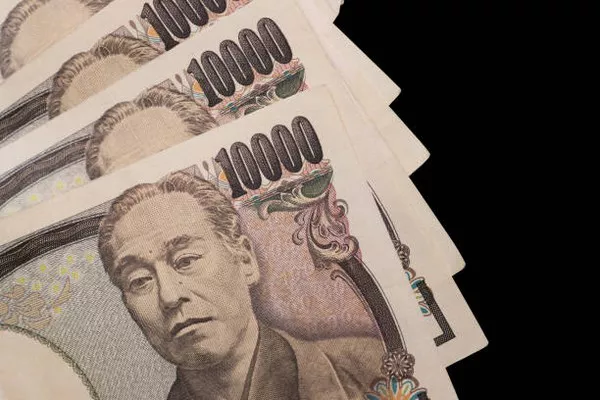Japan’s currency is renowned for its intricate designs, rich history, and cultural significance. Among its array of coins, the 500 yen coin stands out as a symbol of prosperity, tradition, and artistic excellence. In this article, we delve into the fascinating world of Japan’s 500 yen coins, exploring their history, design features, collector’s value, and cultural significance.
A Brief History of Japan’s 500 Yen Coins
Japan’s modern currency system traces its origins back to the Meiji Restoration in the late 19th century when the country embarked on a journey of modernization and economic development. The yen, Japan’s official currency, was introduced in 1871 as part of the government’s efforts to standardize its monetary system and facilitate trade and commerce.
The 500 yen coin was first minted in 1982, coinciding with the opening of the Osaka World Expo. Its introduction aimed to commemorate this significant event and provide a convenient denomination for vending machines and public transportation systems. Since then, the 500 yen coin has become a staple in Japan’s currency landscape, valued for its versatility and practicality.
Design Features of Japan’s 500 Yen Coins
The 500 yen coin boasts a distinctive design that reflects Japan’s rich cultural heritage and natural beauty. Here are some notable design features of Japan’s 500 yen coins:
Obverse Side:
Chrysanthemum Crest: The obverse side of the coin features Japan’s national flower, the chrysanthemum, surrounded by a stylized pattern of rays. The chrysanthemum crest symbolizes the imperial family and is often associated with longevity and prosperity.
Denomination: The denomination “500 yen” is inscribed in Japanese characters along the outer edge of the coin, highlighting its value.
Reverse Side:
Phoenix Hall: The reverse side of the coin showcases the iconic Phoenix Hall, a UNESCO World Heritage Site located in Uji, Kyoto Prefecture. The Phoenix Hall, also known as Amida Hall, is renowned for its architectural splendor and cultural significance, serving as a symbol of Japan’s rich artistic and religious heritage.
Year of Issue: The year of issue is inscribed below the Phoenix Hall, indicating the year the coin was minted.
Floral Motif: Intricate floral motifs adorn the perimeter of the coin, adding an elegant touch to its design.
Collector’s Value and Rarity
While Japan’s 500 yen coin is primarily used in daily transactions, it also holds value among numismatists and collectors worldwide. Collectors are drawn to the coin’s exquisite design, historical significance, and limited mintage, making it a prized addition to coin collections. Some factors that contribute to the collector’s value and rarity of Japan’s 500 yen coins include:
Limited Mintage: The 500 yen coin is minted in limited quantities each year, with new designs introduced periodically to commemorate special occasions and events. Coins from specific years or with unique design variations may command higher prices among collectors.
Condition: The condition of the coin, including its level of wear and preservation, can significantly impact its collector’s value. Uncirculated coins in pristine condition are highly sought after by collectors and may fetch premium prices in the numismatic market.
Historical Significance: Coins that commemorate significant historical events, cultural milestones, or anniversaries may hold greater collector’s value due to their historical significance and rarity.
Design Variations: Variations in design, including mint marks, edge lettering, and special features, can make certain coins more desirable to collectors. Limited edition releases or coins with errors or anomalies may command higher prices in the collector’s market.
Cultural Significance and Symbolism
Beyond its monetary value, Japan’s 500 yen coin holds cultural significance and symbolism deeply rooted in the country’s traditions and heritage. The coin’s design elements, such as the chrysanthemum crest and Phoenix Hall, evoke themes of longevity, prosperity, and spiritual enlightenment, reflecting Japan’s reverence for nature, history, and spirituality. Additionally, the use of traditional motifs and architectural landmarks serves as a reminder of Japan’s rich cultural legacy and enduring artistic heritage.
Investing in Japan’s 500 Yen Coins
For collectors and investors alike, Japan’s 500 yen coins offer a unique opportunity to acquire tangible assets with intrinsic value and historical significance. Whether seeking to build a diverse coin collection, commemorate special occasions, or preserve wealth through numismatic investments, Japan’s 500 yen coins present an attractive option for discerning enthusiasts. With their timeless beauty, cultural resonance, and limited availability, these coins continue to captivate collectors and investors worldwide, embodying the enduring allure of Japan’s numismatic heritage.
FAQs
1. Are Japan’s 500 yen coins made of precious metal?
No, Japan’s 500 yen coins are primarily composed of nickel and zinc, with a copper core. While they do not contain precious metals like gold or silver, their numismatic value lies in their design, rarity, and historical significance.
2. How often does Japan release new designs of the 500 yen coin?
Japan typically releases new designs of the 500 yen coin periodically to commemorate special events, anniversaries, or cultural milestones. These new designs may feature different motifs, landmarks, or symbols reflecting the theme of the occasion.
3. Can I use Japan’s 500 yen coins outside of Japan?
While Japan’s 500 yen coins are legal tender within Japan, they may not be accepted for transactions outside of the country. It is advisable to exchange them for local currency before traveling to avoid any inconvenience.
4. Are there any rare or valuable editions of Japan’s 500 yen coins?
Yes, certain editions of Japan’s 500 yen coins, particularly those with unique design variations, minting errors, or historical significance, may be considered rare and valuable among collectors. Coins in pristine condition or from specific years may also command higher prices in the numismatic market.
5. What is the significance of the chrysanthemum crest on Japan’s 500 yen coins?
The chrysanthemum crest holds deep cultural significance in Japan, symbolizing the imperial family and serving as a national emblem. Its inclusion on Japan’s 500 yen coins reflects the country’s reverence for tradition, longevity, and prosperity.


